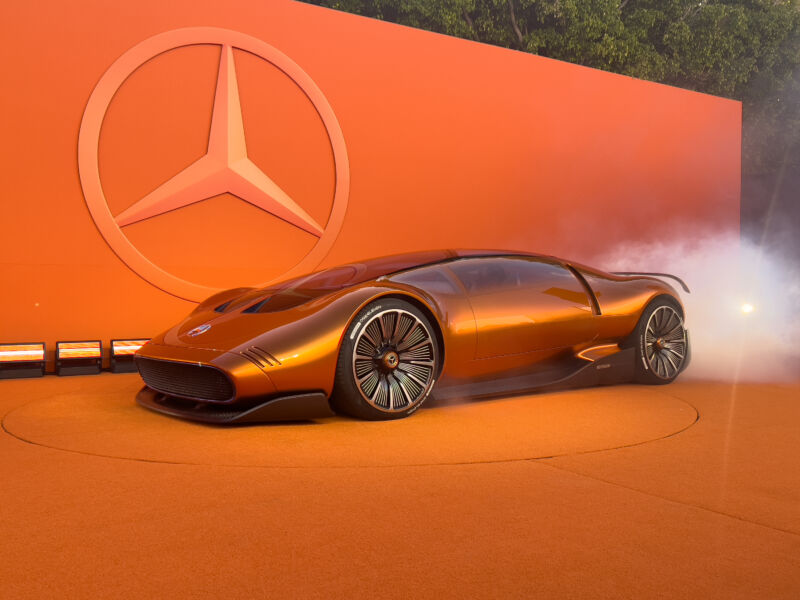
Enlarge / Formula 1 battery tech and light, compact, but powerful electric motors would power the Mercedes-Benz Vision One-Eleven. (credit: Jonathan Gitlin)
CARLSBAD, CALIF.—In 1969, a couple of short months after humans first walked on the surface of the moon, Mercedes-Benz debuted a revolutionary new concept car at that year's Frankfurt auto show. Called the C111, this orange-and-black coupe featured dramatic gullwing doors but also served as a testbed for new technology, including a four-rotor Wankel rotary engine. Now, 54 years later, it has drawn inspiration from that car for its newest concept, the Vision One-Eleven. It, too, is orange, and it also showcases new technology—in this case very small and lightweight axial flux electric motors.
Axial flux motors aren't exactly new—most optical drives use them, for example, but they're not very common in automotive applications. The one-off Jeep Magneto used axial flux motors, as do production hybrid supercars from Acura, McLaren, and Ferrari. In the case of the Italian OEM, it sources the motors from Yasa, a British company that was acquired by Mercedes in 2021.
Like the much more common radial flux motor, an axial flux motor uses magnets (in this case, permanent magnets), soft iron to transport the flux, copper as the material that's connected to the inverter, and an aluminum housing.
Read 12 remaining paragraphs | Comments
